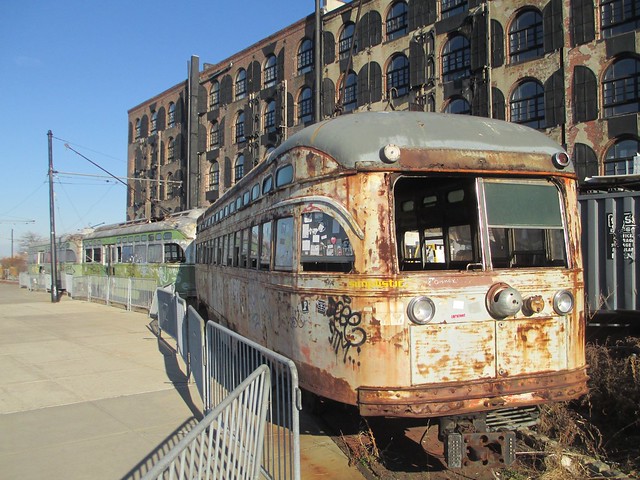
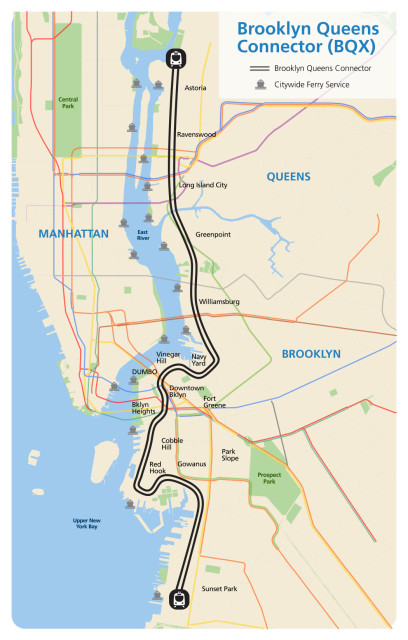
First and foremost let no one say this isn’t an interesting idea. Small cities across the country have revitalized (i.e. gentrified) once industrial areas with new transit thereby creating vibrant new neighborhoods. The idea is also, and most importantly, a political play which most likely won’t see the light of day. The Mayor and the Governor, Andrew Cuomo, very publicly do not get along and at this point seem to only talk to one another at staged photo ops when both absolutely must be together. The Governor ultimately calls the shots when it comes to the MTA and recently those shots seem to be bullets to the back of the head. The Governor refuses to invest in the MTA even when he runs around the city touting coming improvements (which equate to lipstick on a pig). This leaves the Mayor in a pretty helpless position when it comes to transit. After Cuomo’s transportation lap around the city last month the Mayor had to save face with something, anything, of his own. In the past he has proposed building the long dormant Utica Ave Subway (which we haven’t heard anything about since) and improved ferry service. The ferry service at least seems to be gaining some steam but much like this new proposal only helps the real estate interests which are rapidly changing the face of the waterfront. Being elected as a progressive reformer improving transit seems to be something de Blasio does actually care about but one he doesn’t have much power to affect.
The devil is in the details here which officially have not been released (if they even exist in the fist place), but it’s hard to see how a streetcar along the waterfront would be better than what we have now. The streetcar proposal is not a new one, famously Bob Diamond fought the city for years trying to build a short streetcar line from downtown Brooklyn to Red Hook (the trolleys he bought, long fixtures of the Red Hook waterfront, have just recently been removed). The only way for trolleys to be better than a bus line is for the trains to run along dedicated rights-of-way. The streets along the waterfront are not large arteries which could easily accommodate transit with a road diet and many have already been made thinner with the addition of dedicated bike lanes. The Select Bus Service lines the city has been trying to expand have run into very vocal resistance (mostly in the more suburban areas of Queens) due to the removal of parking. While the new residents of the waterfront may drive much less than those in Woodhaven, Queens, there would still need to be a significant removal of both parking and bike lanes in order to make this work.
The second question which would determine how successful such a system would be how it integrates with the current transportation network. Transit does not exist in a vacuum, it requires a network for the user to derive the most benefit from it; Otherwise you’d just walk, bike, or drive. Because the streetcar would be run by the city there is no guarantee that there would be a free transfer to subway or bus lines. Much like how the PATH and MTA interact there would be a separate fare (which was how things operated when the subways were private companies competing with one another). This means the streetcar would only help people who live and work along the line. Even with new growth this would be a small fraction of overall city transit riders. New systems from the ground up have had mixed results in the US, the worst offender being the Washington DC system which was once planned as a 7.2m line but was truncated to just 2.4m when costs skyrocketed. The line began construction in 2009 and still has not opened. Even when it does it will not even run through neighborhoods it was designed to serve and unless it is connected to the Metro will turn out to be nothing more than an expensive toy.
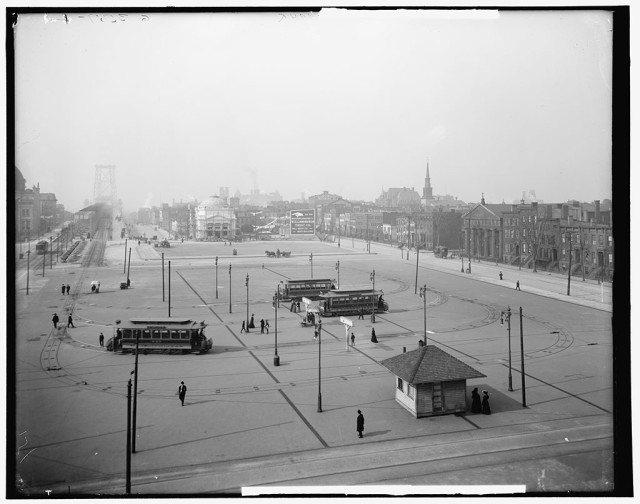
Ironically there were once thousands of streetcars crisscrossing Brooklyn (dodging trolleys led to the Brooklyn baseball team being named the Brooklyn Dodgers). The Williamsburg Bridge itself once had 4 streetcar tracks on it and when opened served more trains than automobiles. Times changed and the tracks were removed for more space for cars. Today the trolley terminal at Essex St is being considered for an underground park space. The streetcar that the Mayor should be talking about is one which runs over the Williamsburg Bridge to a rehabilitated terminal but given the auto traffic on the bridge today that will never happen. The need for improved transit along the waterfront is obvious and will only increase as new developments in Greenpoint and the Domino Sugar complex begin to open. New bus lines are the only affordable short term option and where possible bus lanes should be introduced.
The streetcar idea is also part of a larger problem, the lack of any centralized planning for the NYC waterfront redevelopment. The city, not wanting to waste taxpayer dollars with a planning department that actually has any power, has spent the last 15 years rezoning the waterfront so that private developers could foot the bill for new infrastructure and parks. Unlike with the extension of the 7 Line to Hudson Yards, the city was content to let Williamsburg grow on its own without working with the MTA to facilitate growth. The streetcar is a band aid on this problem as a decade of growth with no planning has led to overcrowded subways. The MTA is faced with a problem that it was never designed to deal with: ridership growth. Since its inception in 1968 the MTA has been working to stop the hemorrhaging of riders. It has pumped billions in rehabilitating a once famously dilapidated system. I get the feeling that the people who run the MTA are still living in the bad old days; this is a new era and we need new leadership.
This brings us to the news that the MTA needs to shut down the Canarsie Tubes, the tunnels that carry the L Train between Manhattan and Brooklyn, and their poor handling of community outreach. The city and MTA have made, what I consider, paltry improvements to the transit situation in northern Brooklyn given the historic growth over the last decade. Even rerouting the M train was done so not because it was a planned improvement but because of budget cuts and the removal of the V Train. While it is true the L Train was the first to undergo CBTC conversion this had more to do with the fact that it runs entirely on its own line and would not require multiple branch integration (and thus easier and cheaper to build as a pilot program). The city and the MTA have sat back and reaped the benefits of a decade of growth and been content to let riders suffer
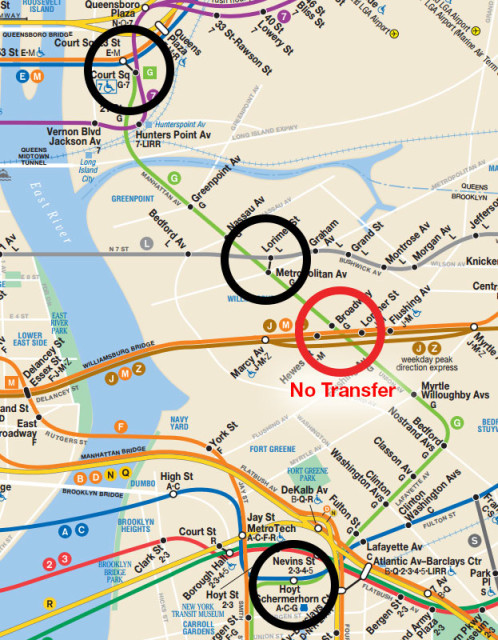

The disinvestment and poor planning in northern Brooklyn is finally coming home to roost. The MTA has known that the Canarsie Tubes would have to be shut down since Hurricane Sandy knocked them out in 2012. They waited this long because they knew it was going to be the most difficult rehabilitation to pull off and in that time they never bothered to reach out to the city or community to work on a long term plan. In all of my futureNYCSubway plans I’ve included a new tunnel between Manhattan and Williamsburg based on historical proposals. Even if the city was serious about building a new tunnel it would not be done in time to help the L Train shutdown. Running more 6th Ave trains to Williamsburg will help but because options for 6th Ave service are very limited due to existing capacity constraints. The needs of north Brooklyn and the waterfront have changed dramatically because the city pushed it along with new zoning but the lack of real investment on their part is finally coming to a head. What will happen when the new well-off residents finally demand change? The leaders we have, city, state, and MTA, haven’t just dropped the ball, they’ve kicked it into another yard and don’t want to be bothered to retrieve it. Ferries and streetcars are toys for the rich new waterfront residents compared with the real needs of commuters.

When I talk to people about the L Train shutdown what I’m most shocked by is how they don’t even believe the shutdown is necessary. Every tunnel south of 53rd St has been shut down at some point for rehabilitation so those riders who question the need for this shutdown ought to put down their iPhones and pick up a newspaper. The need is real and the options are pretty bad. The MTA has done a terrible job so far when it comes to public relations. Historically we only seem to make the big, required changes when something catastrophic hits. Sandy was that wake up call and now the city needs to rethink how it approaches development, transportation, and investment.

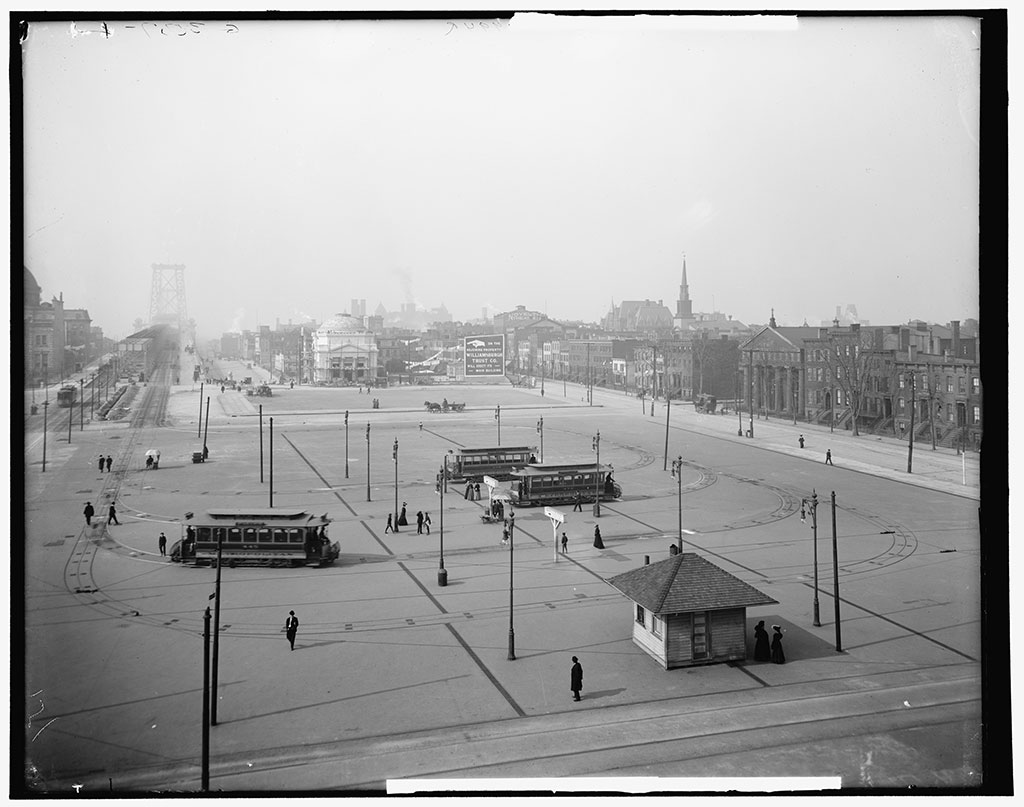

If you had three shifts a day 365 days a year could you shorten the multi year L tunnel repair time line?
You think unions would go for that?
The proposed streetcar line doesn’t make a whole lot of sense to me. It is personally ironic to me, in a way. When I was growing up across Myrtile Av. from Ft. Greene Park, I was saddened, as a fan of it, when they tore down the Myrtle Av. El. Now, a mere 50 years later, comes a proposal to establish something only a few blocks from where the El used to run. How to accommodate waterfront development is a problem. People object to the closure of the L connection to Manhattan because they instinctively don’t understand why the tunnel reopened after Sandy and yet needs to close now, years later. The new service pattern should involve a free transfer to the J M Z from the G as well as Canarsie trains going along the Broadway El. It will still be very inconvenient but at least it won’t take as long as the Manhattan Bridge repairs!